Branford celebrated its 375th anniversary in 2019 and the Blackstone Library collaborated with the 375th Committee to provide fun and interesting facts about Branford every Friday throughout the year. Listed below you will find additional information and links about each of these places, people and facts. The library is indebted to Jane Peterson Bouley, Branford Town Historian, who provided the majority of the articles and information for our Friday Fun Facts. We would also like to thank the Branford Historical Society for the use of their photographs.
A special poster was designed for this anniversary, highlighting the various neighborhoods that make up Branford. To view the drawings and descriptions from the Branford 375 print, please click here.
The Hindenburg flew over Branford on the day it went down. Pictured below is a photograph taken of the airship. National Public Radio provides an interesting history of the airship, which you can read here.
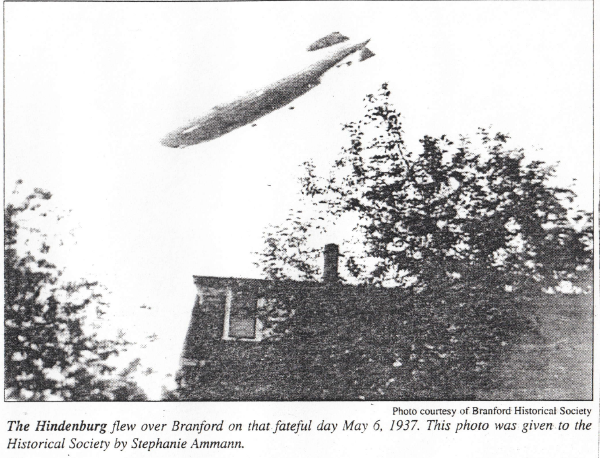
President Rutherford B. Hayes visited the Trowbridge Cottage at 93 Linden Avenue in 1880. If you would like to read more about President Hayes, visit the Rutherford B. Hayes Presidential Library and Museums website.

Photo credit: Branford Historical Society
Branford was the largest strawberry producer on the East Coast in the late 1800s. Pictured below is a strawberry farm on the site of the current Foote Park.
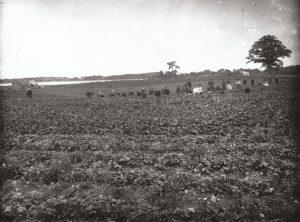
Photo credit: Branford Historical Society
Babe Didrikson Zaharias played golf at the Pine Orchard golf course on August 21, 1948 (New Haven Evening Register, August 22, 1948). Read more about her at the World Golf Hall of Fame website.
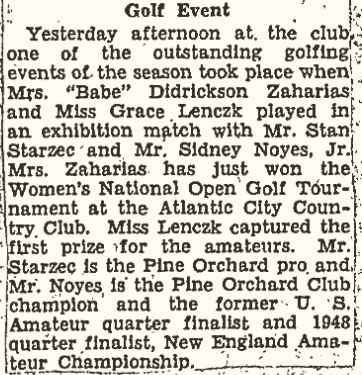
Greta Garbo, Walter Winchell, Harold Stassen, Sinclair Lewis and Jack London visited the Arrowhead Hotel. Built in 1912, the Arrowhead was the only year-round hotel in Short Beach.

Photo credit: Branford Historical Society
Orson Welles directed a play at the Stony Creek Theatre in August 1938. A number of articles about Orson Welles can be found in the library’s collection of Digital Scrapbooks, including one here.
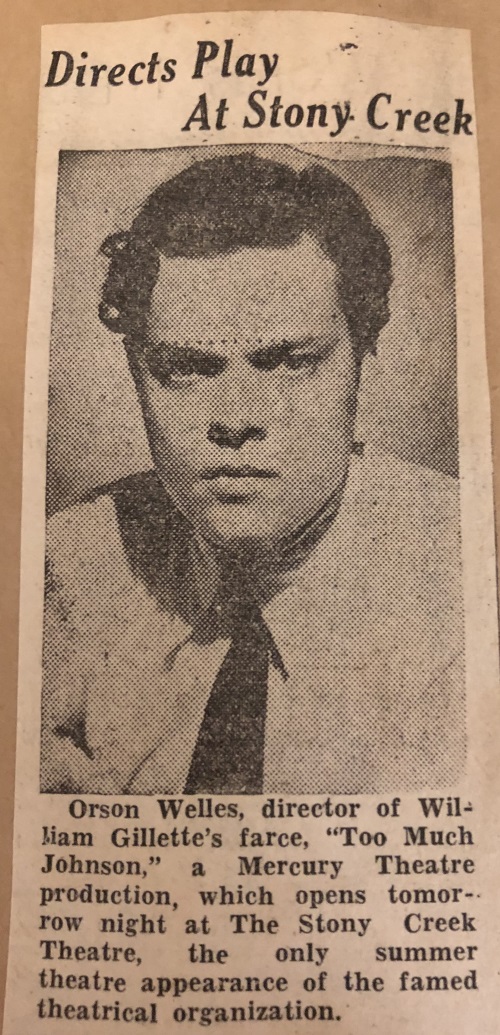
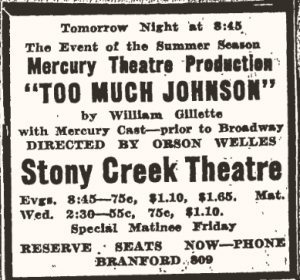
There was a Lucifer match company on the library grounds (owned by Captain Wyllys Butler) in the early 1800s. The Branford Historical Society has some of these matches in their collection.
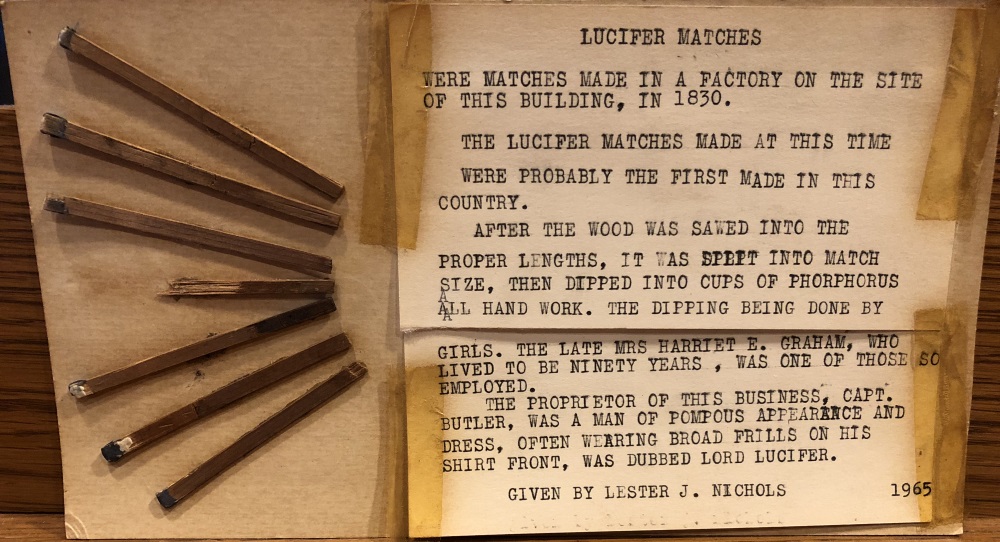
Rudy Vallee and Guy Lombardo played in Indian Neck at Palmer’s Casino in the 1920s.
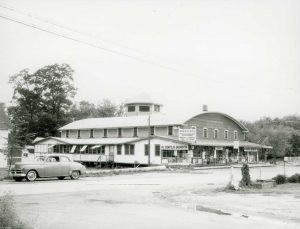
Photo credit: Branford Historical Society
Ayn Rand wrote Anthem while in Stony Creek with her husband, Frank O’Connor, who was performing as “Guts” Regan in another of Rand’s work, The Night of January 16th, at the Stony Creek Theatre. Visit the Ayn Rand Institute to read more about the author and her work.
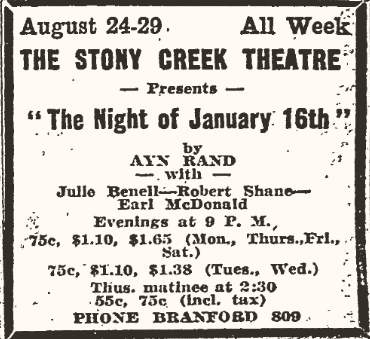
One of the earliest automobile races was held at the Branford Driving Park, which was located on what is now East Main Street, past Featherbed Lane.

Branford Driving Park (Photo credit: Branford Historical Society)

Photo credit: Branford Historical Society
A Navy hot air balloon landed in Hotchkiss Grove in September 1933. Here’s an article from the Branford Review.
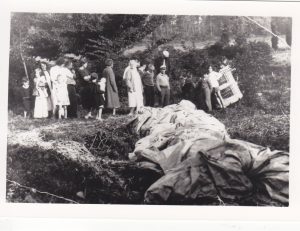
Photo credit: Branford Historical Society
Mark Twain, Dean Acheson, Thorne Smith, James Sherman (Vice President to William Howard Taft) and Agnes DeMille stayed at the Montowese House.
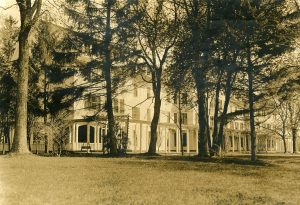
Photo credit: Branford Historical Society
Nellie Green, proprietor of the Talmadge Inn, was also a rumrunner; the Inn was visited by Rudy Vallee, John Barrymore, Tyrone Power, and Bing Crosby.
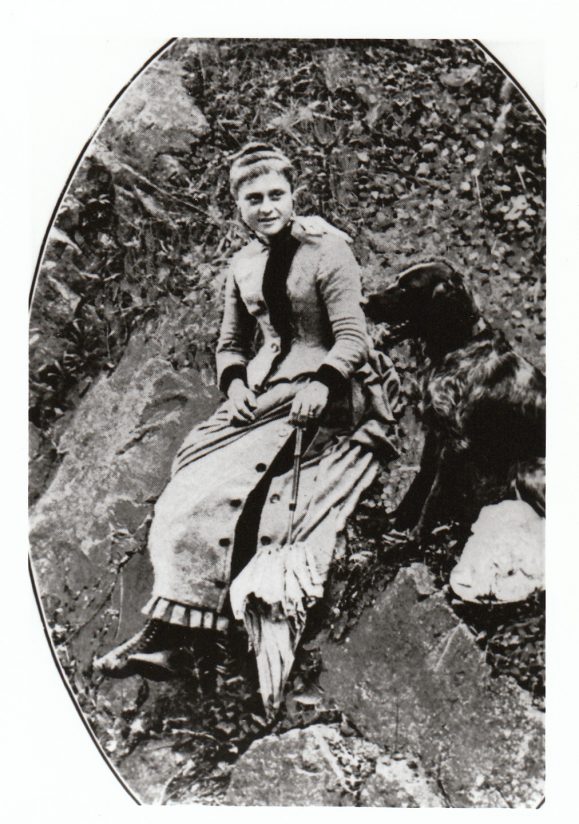
Photo credit: Branford Historical Society
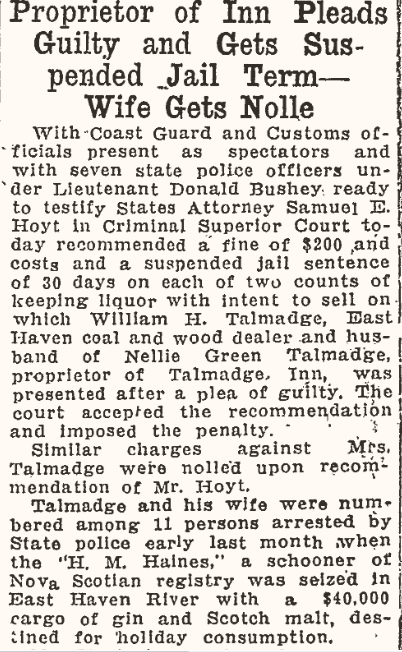
New Haven Evening Register, January 1928
Ella Wheeler Wilcox lived in Short Beach; she was the author of Solitude, from Poems of Passion (she published many books of poetry). The most famous verses are:
Laugh, and the world laughs with you;
Weep, and you weep alone;
For the sad old earth must borrow its mirth,
But has trouble enough of its own.
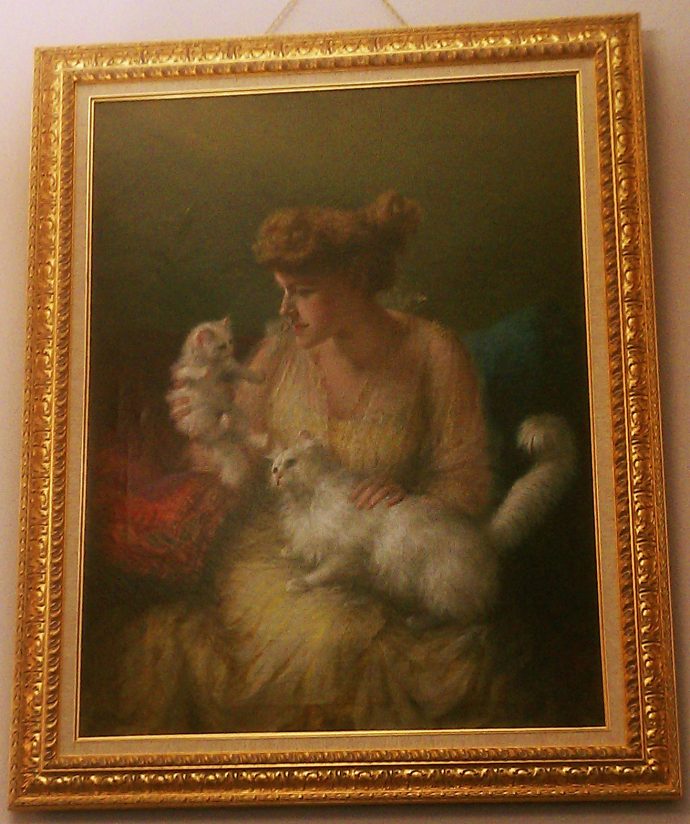
Painted by Lilly Martin Spencer, this portrait is hanging in the Reading Room of the Blackstone Library. The library owns a large collection of Wilcox’s poetry.
The first transcontinental telephone call to Connecticut was made from San Francisco to the Doolittle home (shown below) in Pine Orchard in 1915.
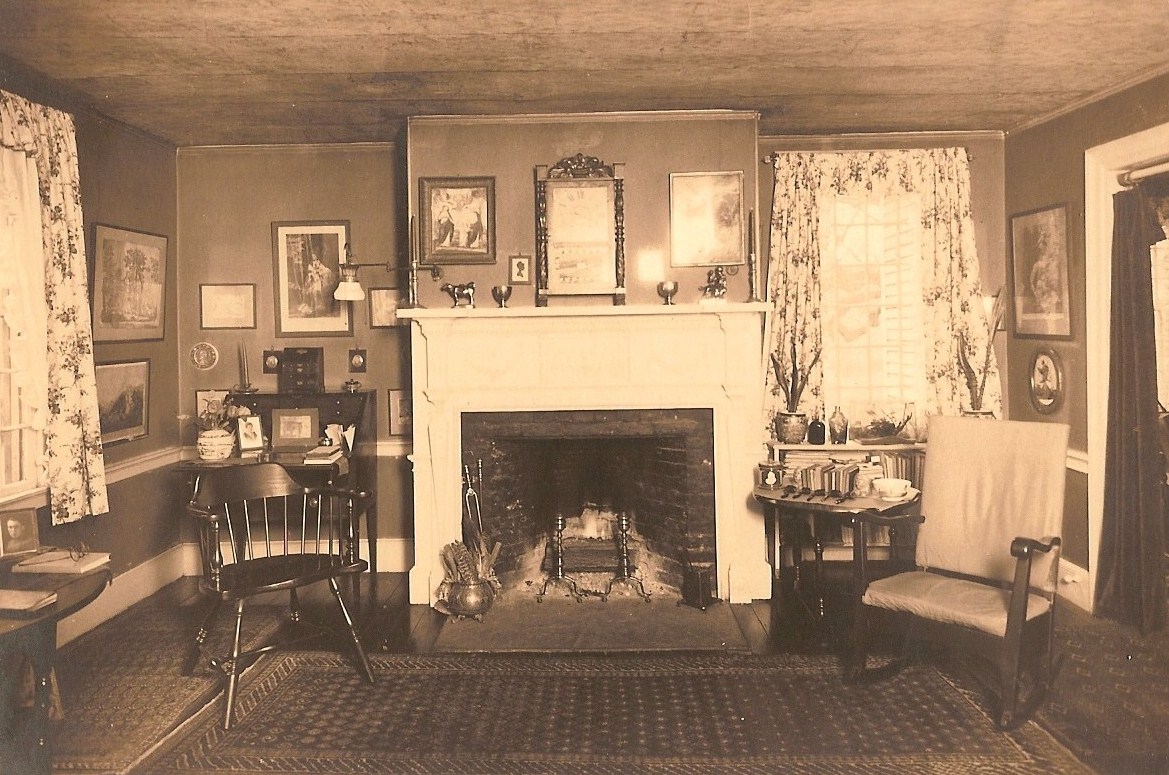
Photo credit: Branford Historical Society
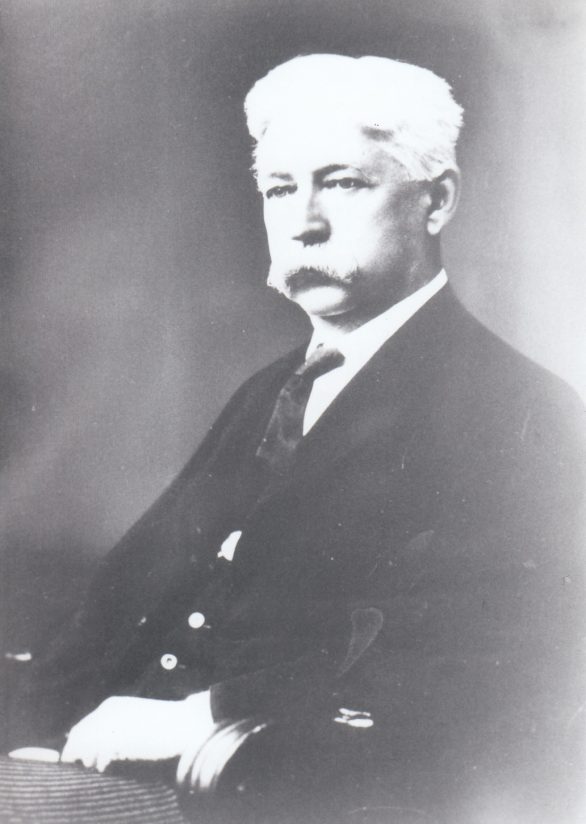
Thomas Doolittle, Photo credit: Branford Historical Society
Branford had an observation tower at Parker Park during World War II.
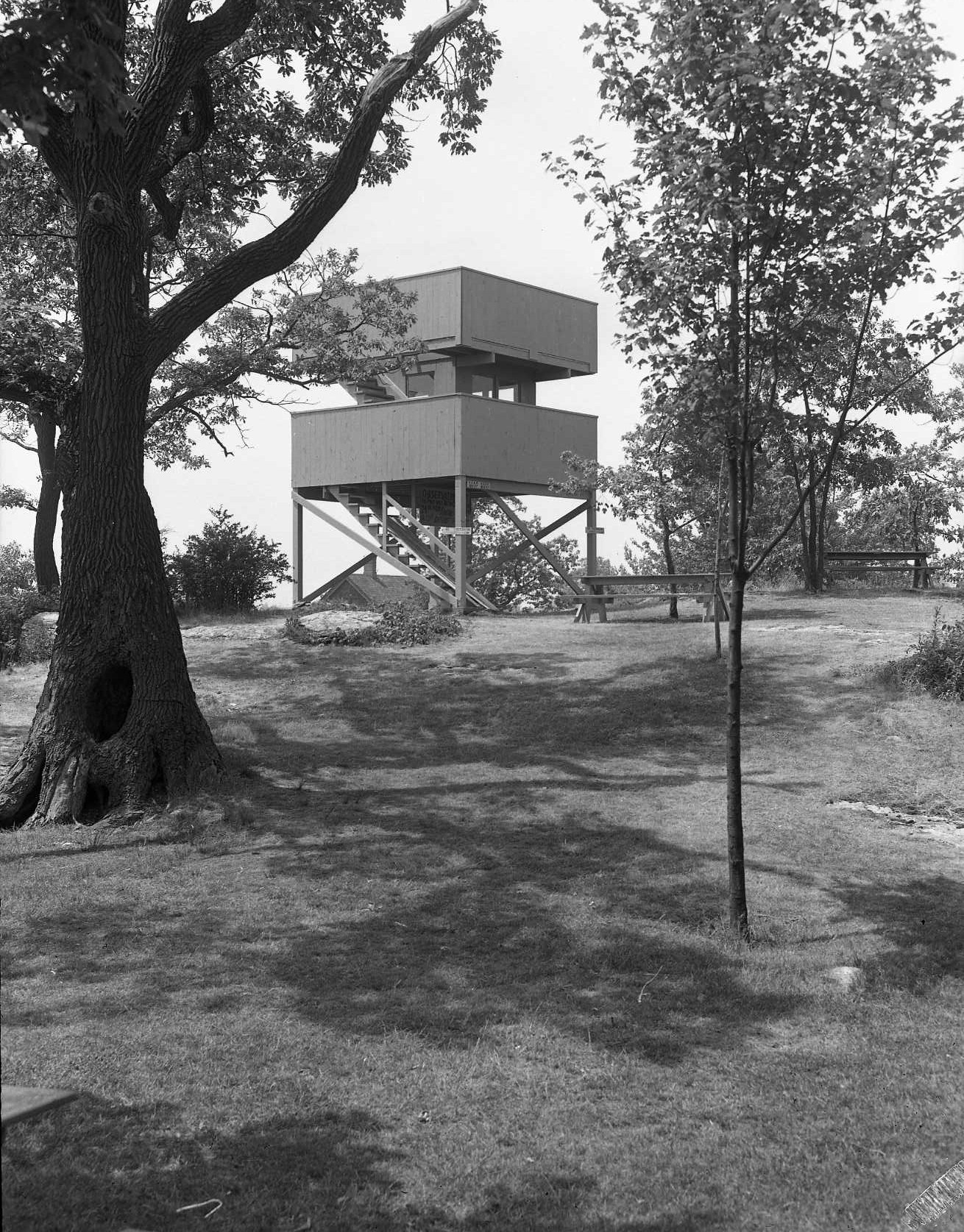
Photo credit: Branford Historical Society
Branford was home to many quarries over the years, including Green’s Quarry, Granite Island Quarry, Pine Orchard Quarry, Red Hill/Stony Creek Red Granite Quarry, Norcross Brothers/Dodds/Castellucci Quarry, which supplied pink granite for Grand Central Station in New York City, the Newberry Library in Chicago, R.H. Macy & Co. in New York City, South Terminal in Boston, the War College in Washington, D.C., and Chelsea Piers in New York City, among many others. Beattie’s Quarry (in Guilford) supplied the granite blocks for the pedestal for the Statue of Liberty.
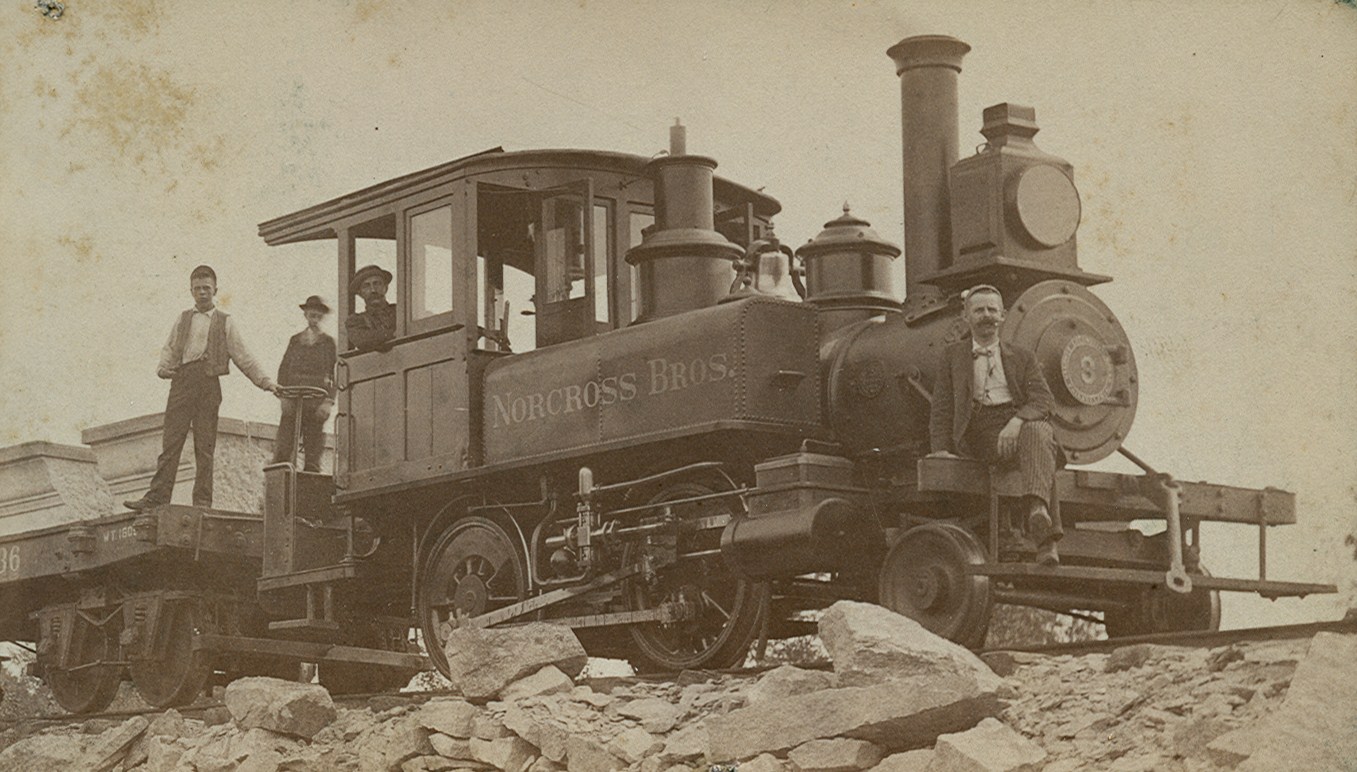
Photo credit: Branford Historical Society
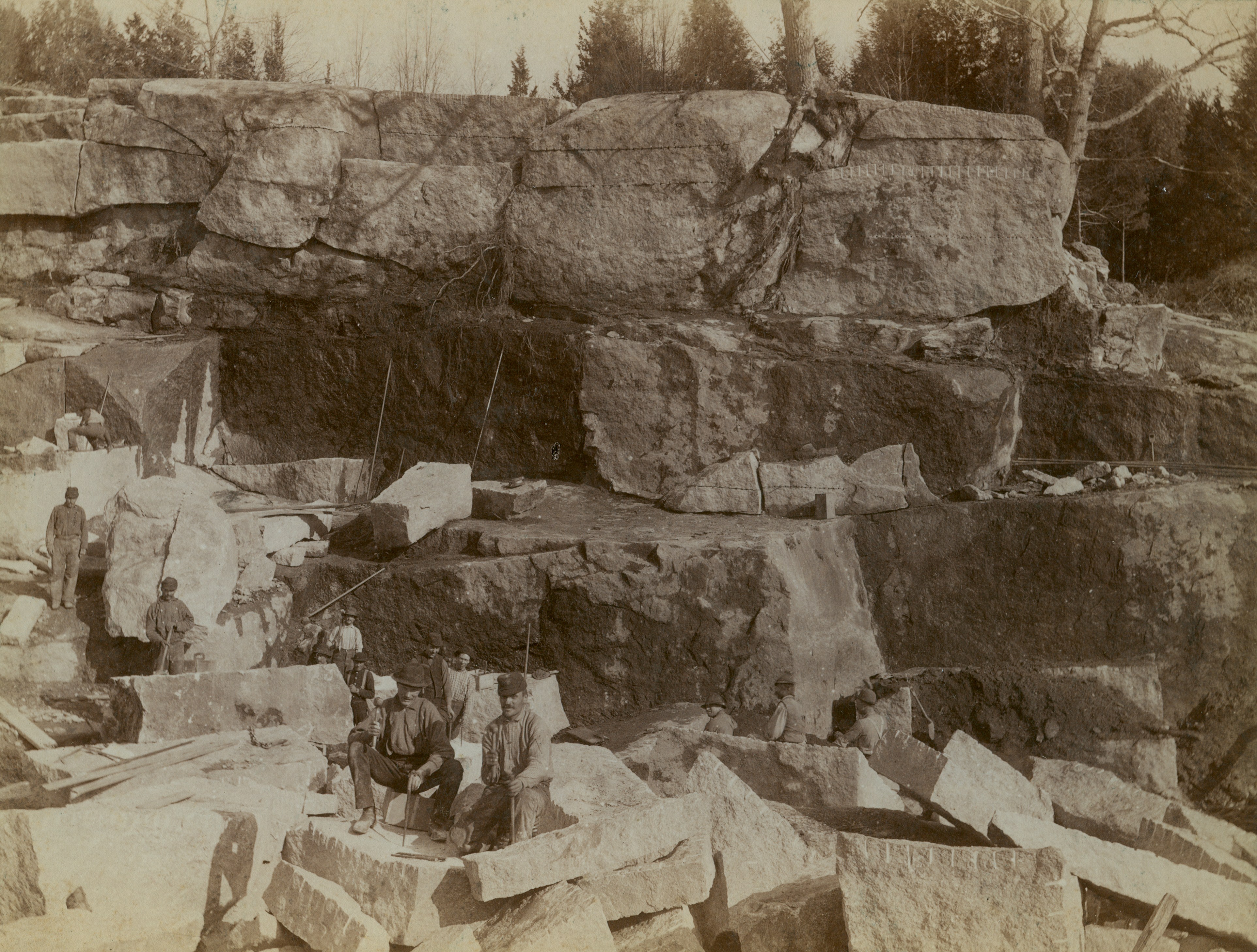
Photo credit: Branford Historical Society
The Leather Man first appeared on Connecticut roads about 1857 and was a familiar sight for the next 30 years. He wore only leather from his head to his toes; his entire outfit weighed over 60 pounds. He followed a precise 360 mile course through Connecticut and New York, which took exactly 34 days. He passed through Branford, stopping at Harding’s Grocery Store at 116 Montowese Street. His health began to fail during the blizzard of 1888 and his body was found on March 24, 1889 in a cave near Ossining, N.Y.
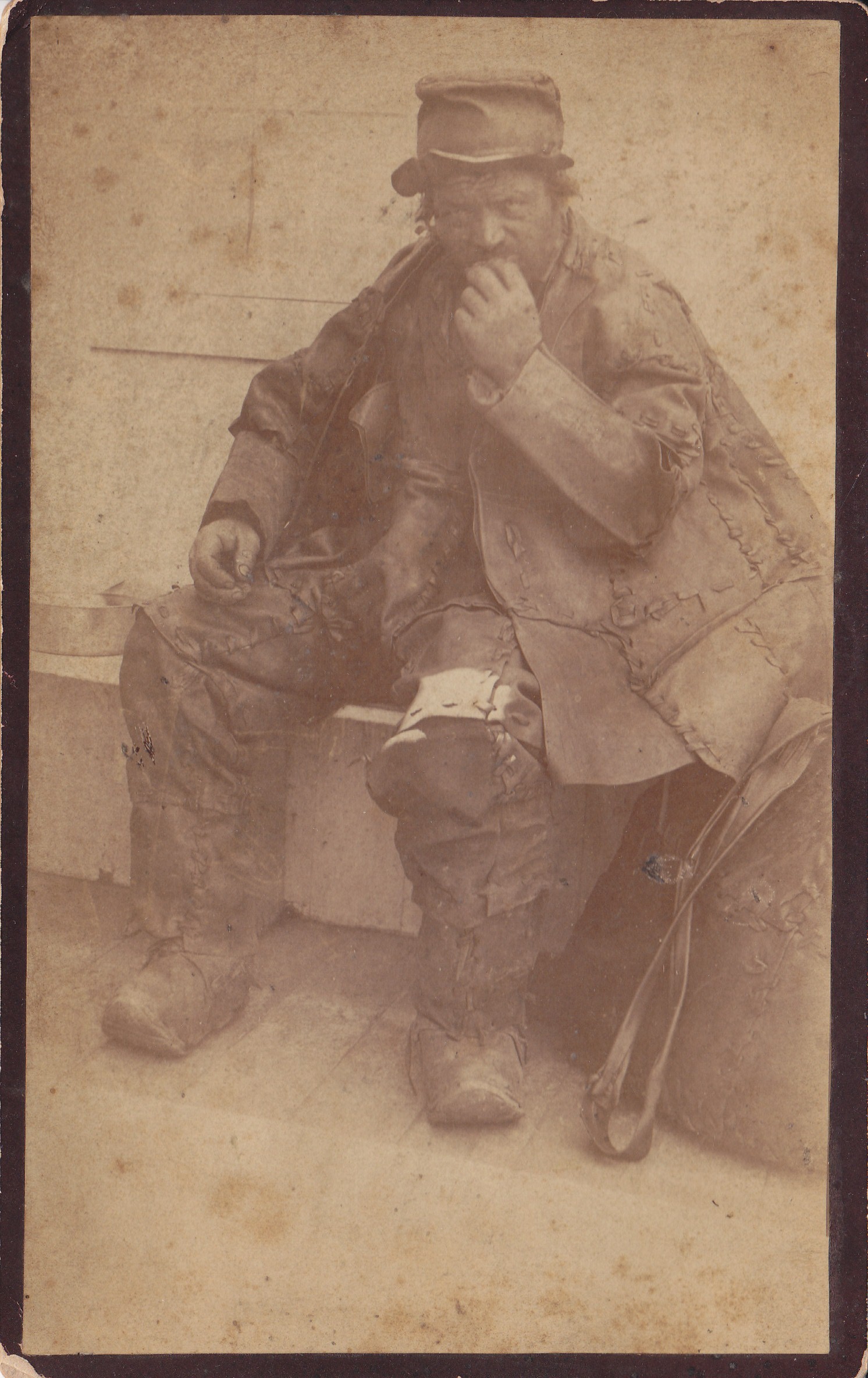
Photo credit: Branford Historical Society, James F. Rogers, photographer
Branford suffered significant damage in the hurricane of 1938 (September 21). The town had received 12 inches of rain the previous week so waters were already high and the ground was very soft; many trees came down in the 80 to 100 mph winds. Shore cottages were destroyed and seven people died on the Thimble Islands.
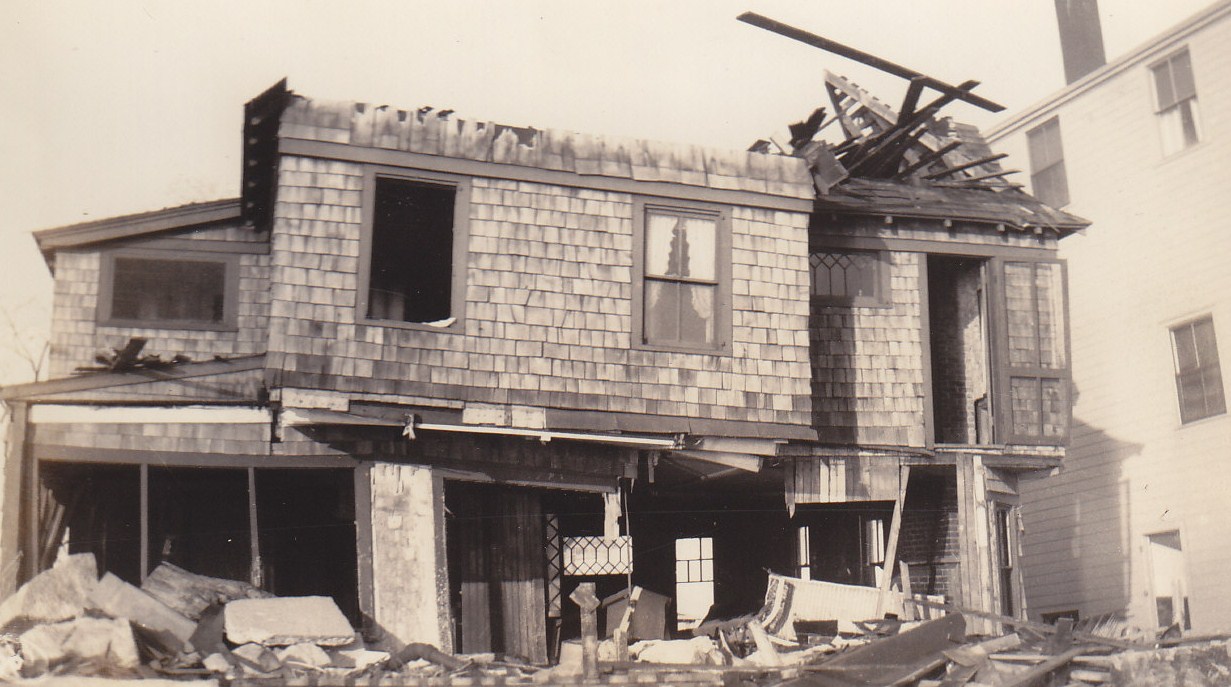
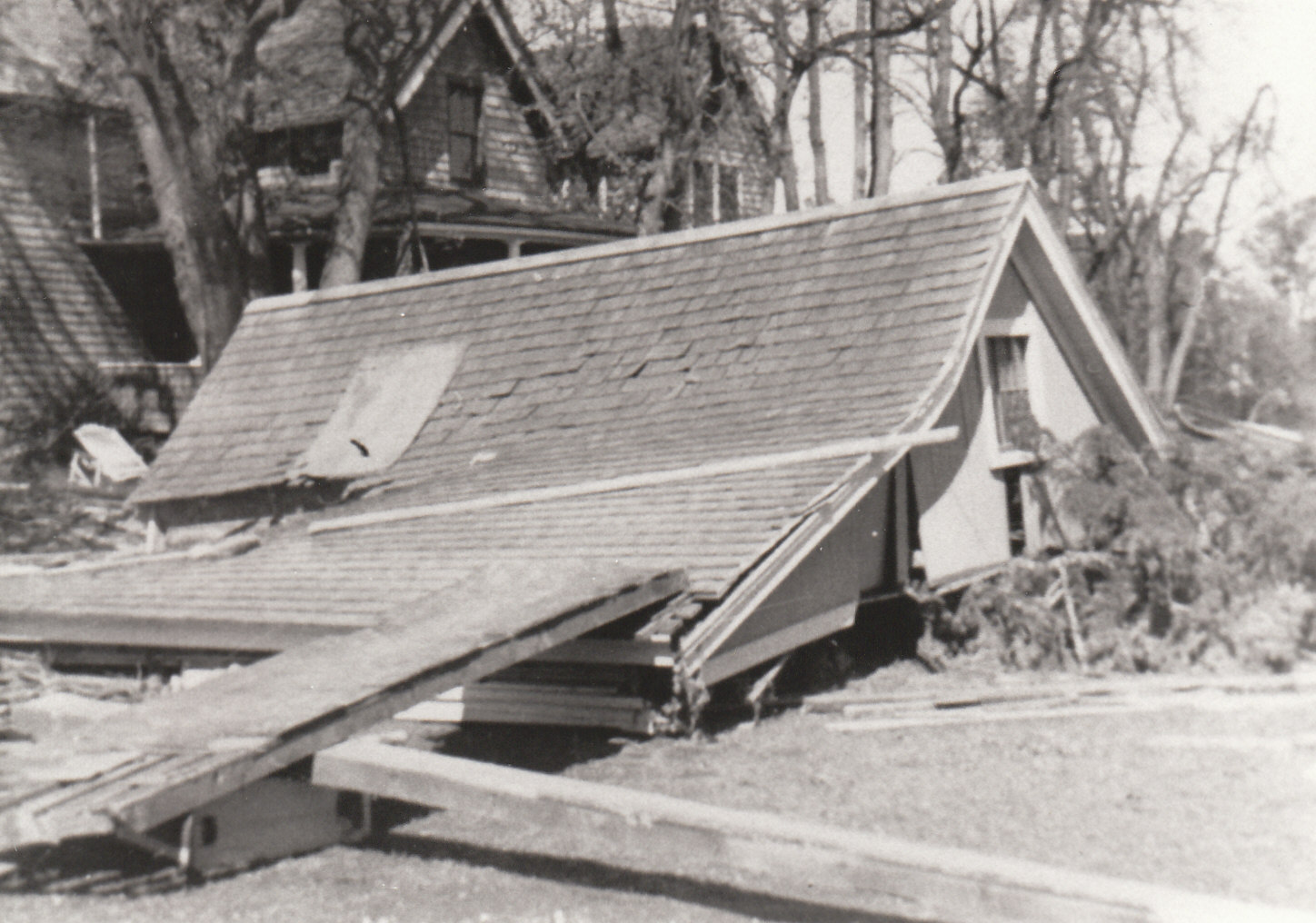
Photo credit: Branford Historical Society
The most famous of Branford’s shipwrecks was that of the “Jenny Lind,” a 70-foot schooner from Sag Harbor that hit Morris Rocks off Sumac Island in Indian Neck on July 12, 1878. The schooner sank and scattered its cargo of pine boards into the Sound. The crew abandoned ship and were rescued by a passing fishing boat. George Averill laid claim to the boat and hauled it to the shore at the end of Linden Avenue. The boat was converted into a restaurant known as The Ark, which served shoreline dinners for many years.

Photo credit: Branford Historical Society
On January 25, 1943 a plane crashed on Sagal Lou Farm on Cherry Hill. Actor Robert Young was a guest of the farm’s owner that night; Young and the pilot exchanged autographs and sent each other Christmas cards for years.

Photo credit: Branford Historical Society, Charlotte Pfeiff, photographer
Astronaut John Glenn visited Branford on July 19, 1962. He spent a few days at the home of his attorney, C. Leo DeOrsey on 2 Spring Rock Road.
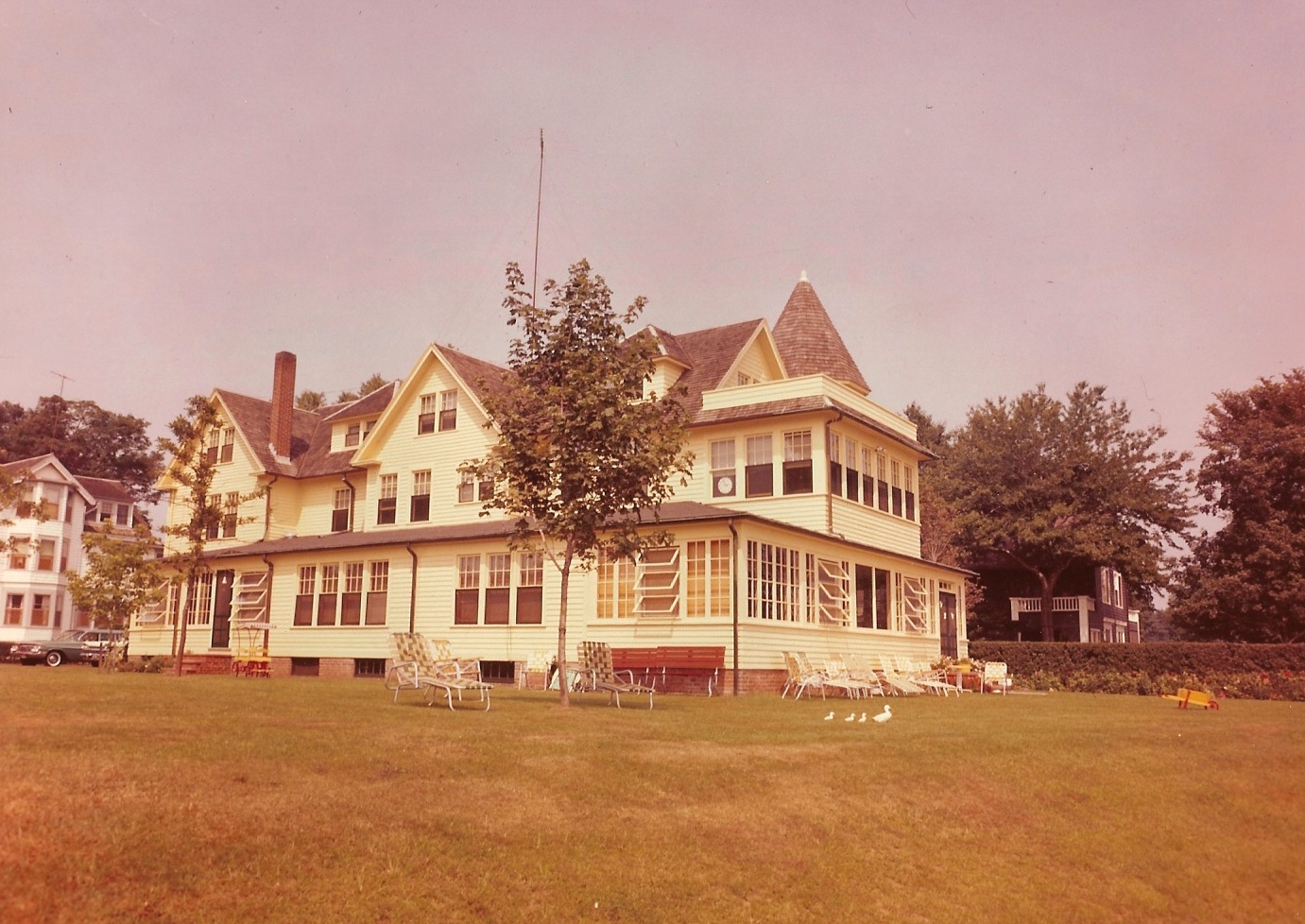
Photo credit: Branford Historical Society, Earl Colter, photographer
Little did Nathaniel Harrison realize when he built his saltbox house on King’s Highway for his wife and eight children that it would become one of Branford’s most important historical landmarks. The Harrison House at 124 Main Street was built in 1724 by Nathaniel Harrison 2nd (1692-1760), having received the land from his father Nathaniel 1st (1658-1727). The house passed to Nathaniel Harrison 3rd (1735-1770) whose only child Martha married Nicodemus Baldwin of Branford. The Baldwins lived in the Harrison House until 1800 when Martha sold the house to Joseph and Lorany (Bradley) Linsley. The house was owned for many years by the Linsley daughter Lorany and her husband Thomas Smith who served in the Civil War. The house was purchased by J. Frederick Kelly who restored it and upon his death in 1947 bequeathed it to the Society for the Preservation of New England Antiquities (SPNEA), later known as Historic New England. The Branford Historical Society purchased the property from Historic New England in May of 2016, and is now the proud owner of the Harrison House.
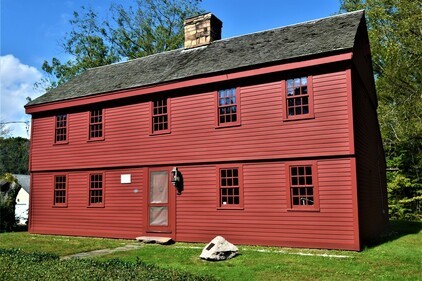
Photo credit: Branford Historical Society
Pawson Park was an amusement park for day trips and picnics and included a roller-skating rink, carousel with flying horses, photograph gallery and restaurant.

Photo credit: Branford Historical Society
Originally a blacksmith shop, then a stove manufacturer, Branford Lock Works was originally the Squire and Parsons Manufacturing Company. Purchased in 1862 by Thomas Kennedy, a lockmaker from New York, the business flourished. The company made a variety of door and window hardware and the products were sold nationally. Kennedy died in 1880 and in 1894 the business was purchased by Yale and Towne Company. A strike in 1910 forced the plant to close and the operation was moved to Stamford.

Photo credit: Branford Historical Society
Ice-cutting was a major activity in Branford during the winter months. There was an abundant supply of ice to be harvested at the Supply Pond and Ward’s Pond in Mill Plain, at the Bradley Pond in Cherry Hill, Altmannsberger’s Pond in Short Beach and from the Branford River.

Photo credit: Branford Historical Society, Harry O. Andrews, photographer
A popular event in Branford at the turn of the century was the annual Branford Carnival. The first carnival was held October 7, 1880 on the Branford Green and featured a cattle and dog show, vegetable exhibit and a parade with floats. For additional carnival photographs visit http://www.blackstone.lioninc.org/branford-carnivals.
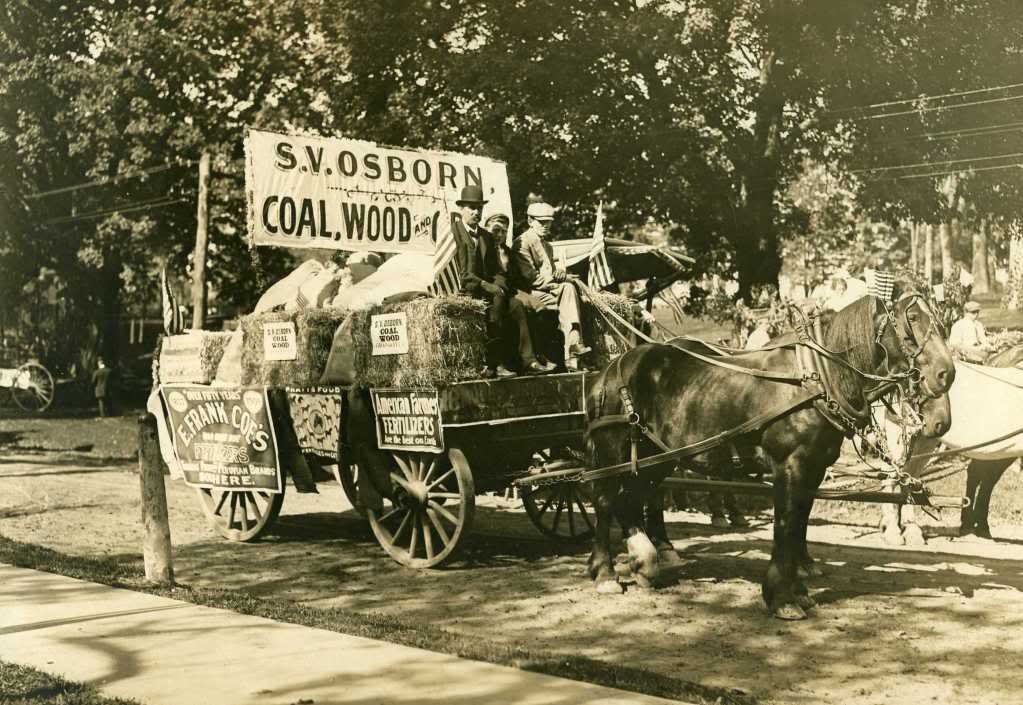
Photo credit: John H. Morton
A lieutenant of Captain Kidd’s was in a duel with the brother of Captain Blackstone. In an article in the New Haven Register, published in 1898, it was reported that a young lieutenant of the pirate Captain Kidd was in a duel with the brother of James Blackstone, who was visiting from England. Blackstone’s brother was quite the swordsman, and but for his fear of the pirate, would have vanquished Kidd’s lieutenant.
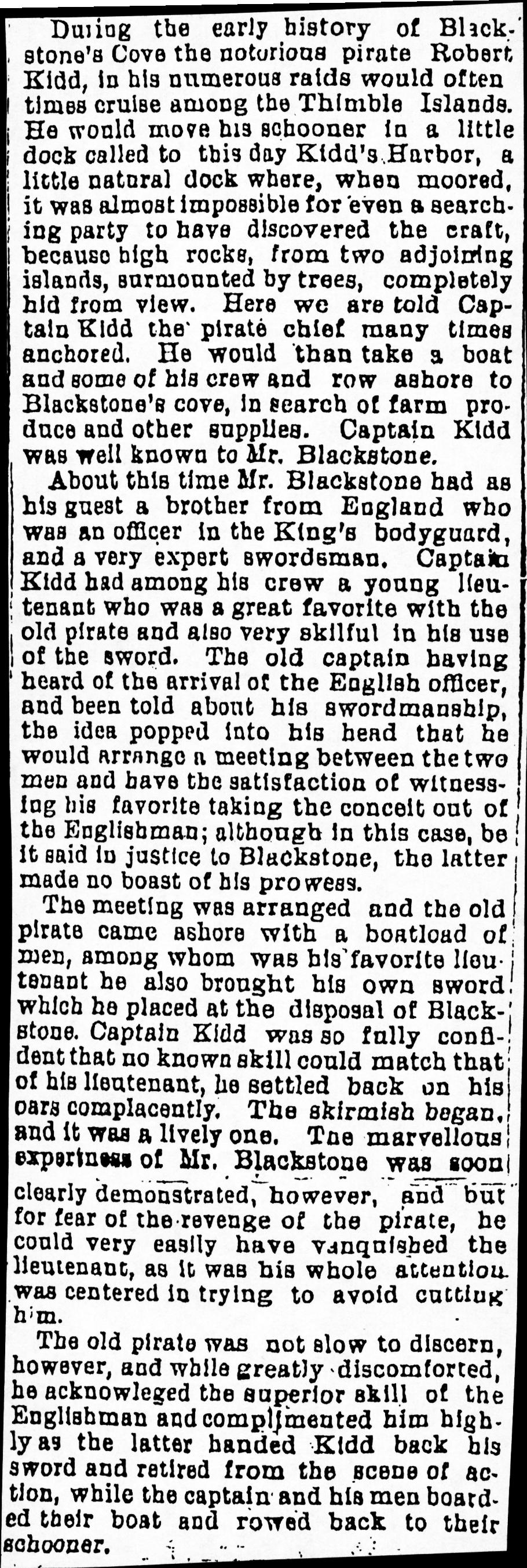
New Haven Register – July 29, 1898
There used to be a street in Branford called Pig Lane. It was built by the first settlers, about where 116 Montowese Street is today. It ran from Hammer Field to the Branford River behind Center Cemetery. Interested in more history of Branford’s street names? Stop by and pick up a copy of Town Historian Jane Bouley’s book The Origin & Naming of Branford’s Streets which is for sale at Blackstone Library.
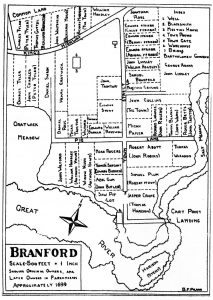
Carolina Lazzari was a famous opera singer who made her premier performance in Chicago in 1918 and her Metropolitan Opera debut on Christmas Day in 1920. Jane Bouley wrote in a Branford Review article “She was an immediate success as ‘the phenomenal contralto who has flashed meteor-like into operatic and concert glory.’ ln 1920 she made more than 100 concert appearances throughout the country under the management of Charles L. Wagner. Rave reviews followed wherever she performed.” Lazzari died in Stony Creek in 1946 and is buried in St. Agnes Cemetery.
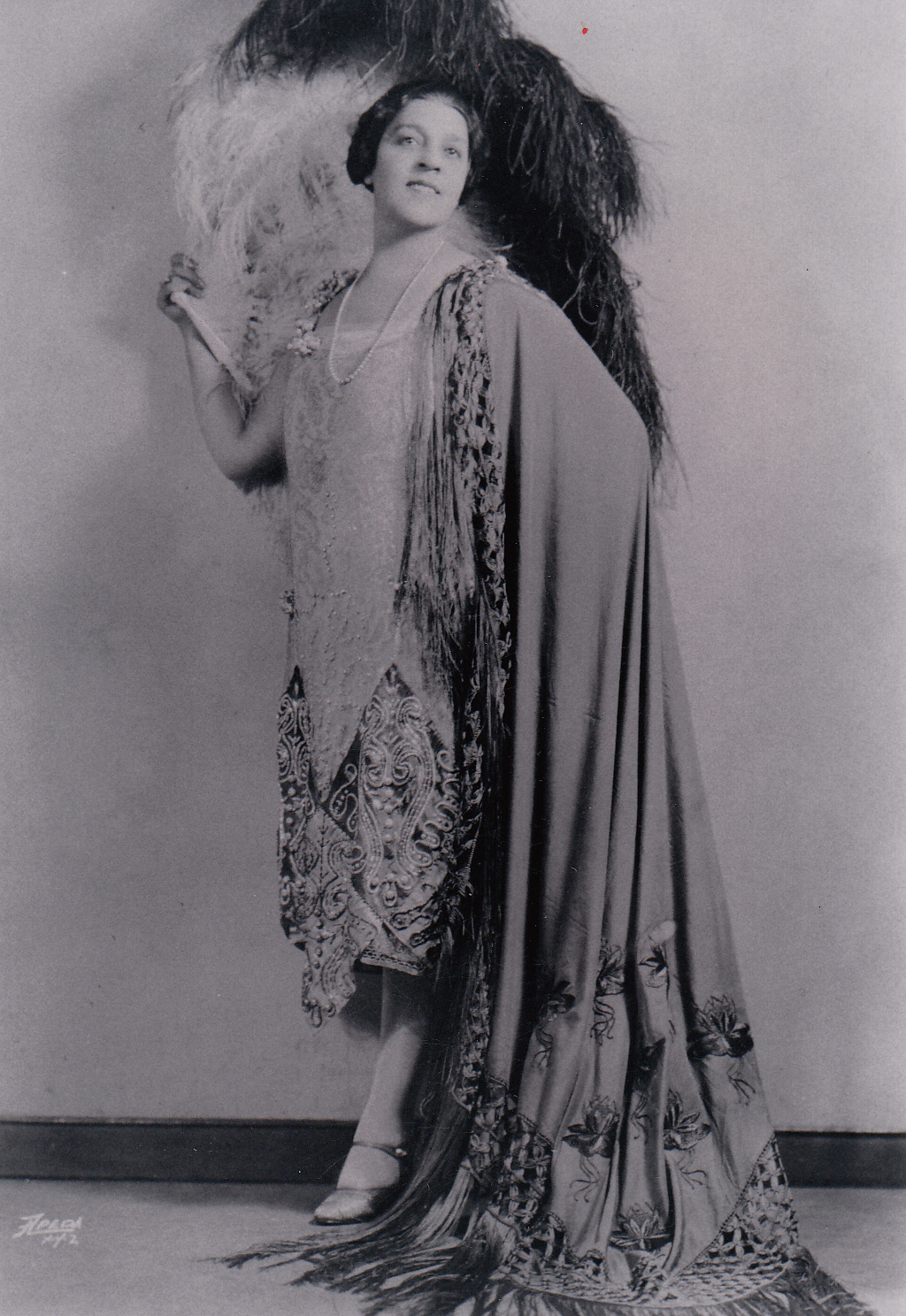
Photo credit: Branford Historical Society
Captain Joshua Slocum (sailed alone around the world in 1898) lectured at the library and docked his boat, “The Spray”, in Lanfare’s Cove
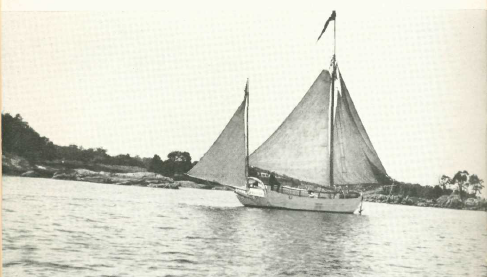
According to the early histories of Yale, a group of ten ministers led by Rev. Jared Pierpont, including Rev. Samuel Russell of Branford, met in Branford in 1700 to found a college. Each minister presented a donation of books, stating, “I give these books for the founding [of] a College in this Colony.” Located first in Saybrook, Yale was eventually moved to New Haven in 1716.
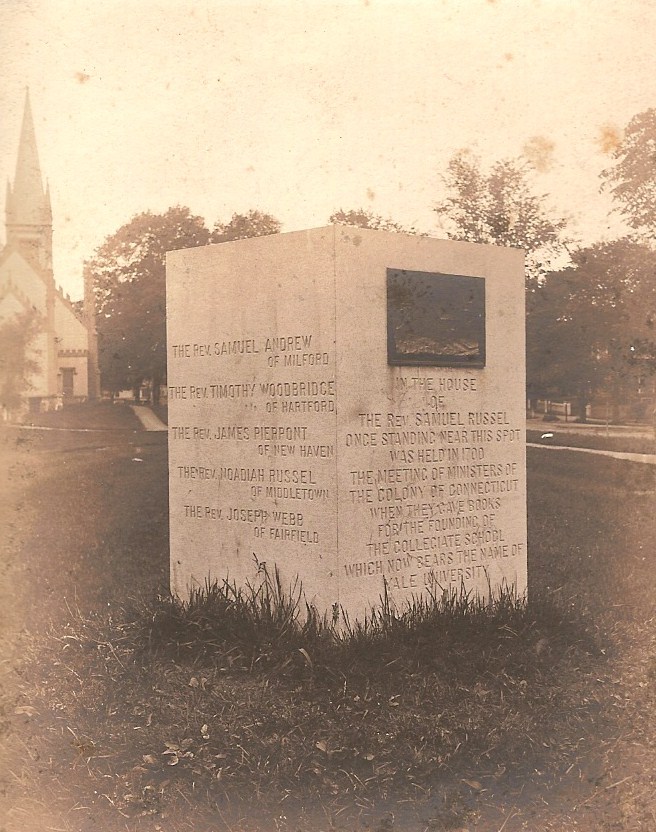
Photo credit: Branford Historical Society, Smith, photographer
Cherry Hill, on one of the highest points in Branford, has an interesting history. Daniel Morris planted 300 cherry trees on his farm and sold the fruit. Schuyler Hamilton, grandson of the famous statesman Alexander Hamilton, purchased the upper class farm in 1859 and built a fine mansion. After Hamilton the gentleman farm was owned by John W. Nichols and family. It was then a dairy farm owned by movie mogul Louis Sagal until after World War II when the area was commercially developed in the 1950’s and 1960’s.
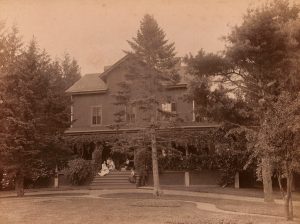
Photo credit: Branford Historical Society
Helen Lewis, Republican candidate for Secretary of State dies in 1938 hurricane.“Mrs. Lewis, one of the most prominent women in Connecticut politics, was nominated as the first woman ever to have a place on the Republican State ticket. She was a former member of the House of Representatives and her primary interest in politics had been in the field of education. She was distinguished for being the first woman to get the chairmanship of the legislative committee and was a one time member of the state board of education.” A newspaper article reporting her death can be found here.
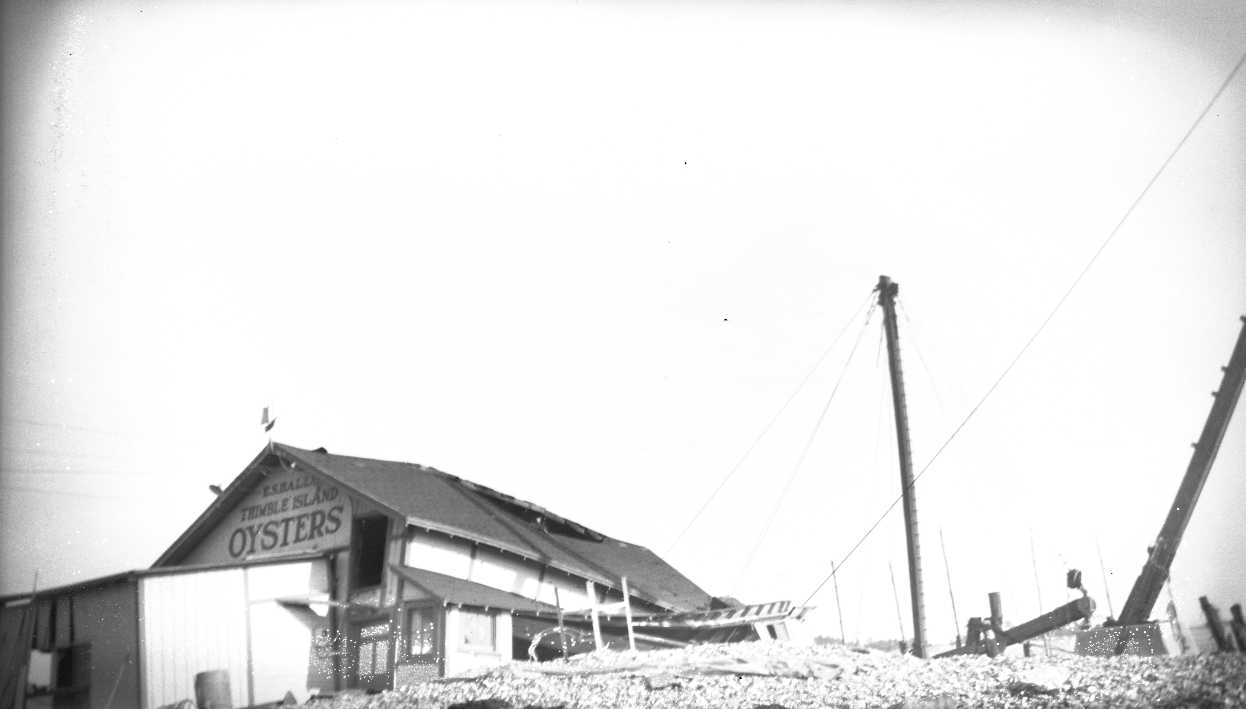
Photo credit: Branford Historical Society
Author Sinclair Lewis directed two plays at the Stony Creek Theatre in 1941; one of his own plays “Angela is 22” as well as ”The Good Neighbor” by Jack Levin.
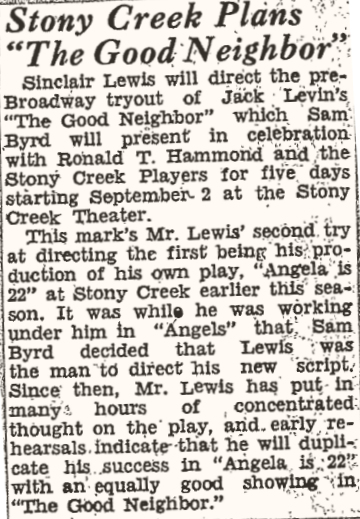
New Haven Evening Register, August 31, 1941
Marquis de Lafayette visited Branford in 1824, where he had dinner with Daniel Averill in his home at 87 Montowese Street, currently the site of the Branford Armory. For additional information on Lafayette, read this Encyclopedia Britannica article. There is also a website documenting The Lafayette Trail at https://thelafayettetrail.org/
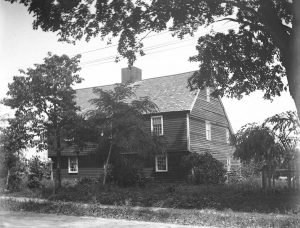
Photo credit: Branford Historical Society
Branford’s town jail once stood on the Green, just to the west and rear of the current Town Hall. Ground was broken for the jail in 1878 and was used until the 1890’s. At that time, it was reported that the conditions in the jail were a disgrace and prisoners were housed in the basement of Town Hall. In 1916, the jail was used to house stray dogs, to the dismay of local residents on Montowese Street who complained about the noise. The old jail was used for storage and torn down in 1968 to make way for a new addition to Town Hall.
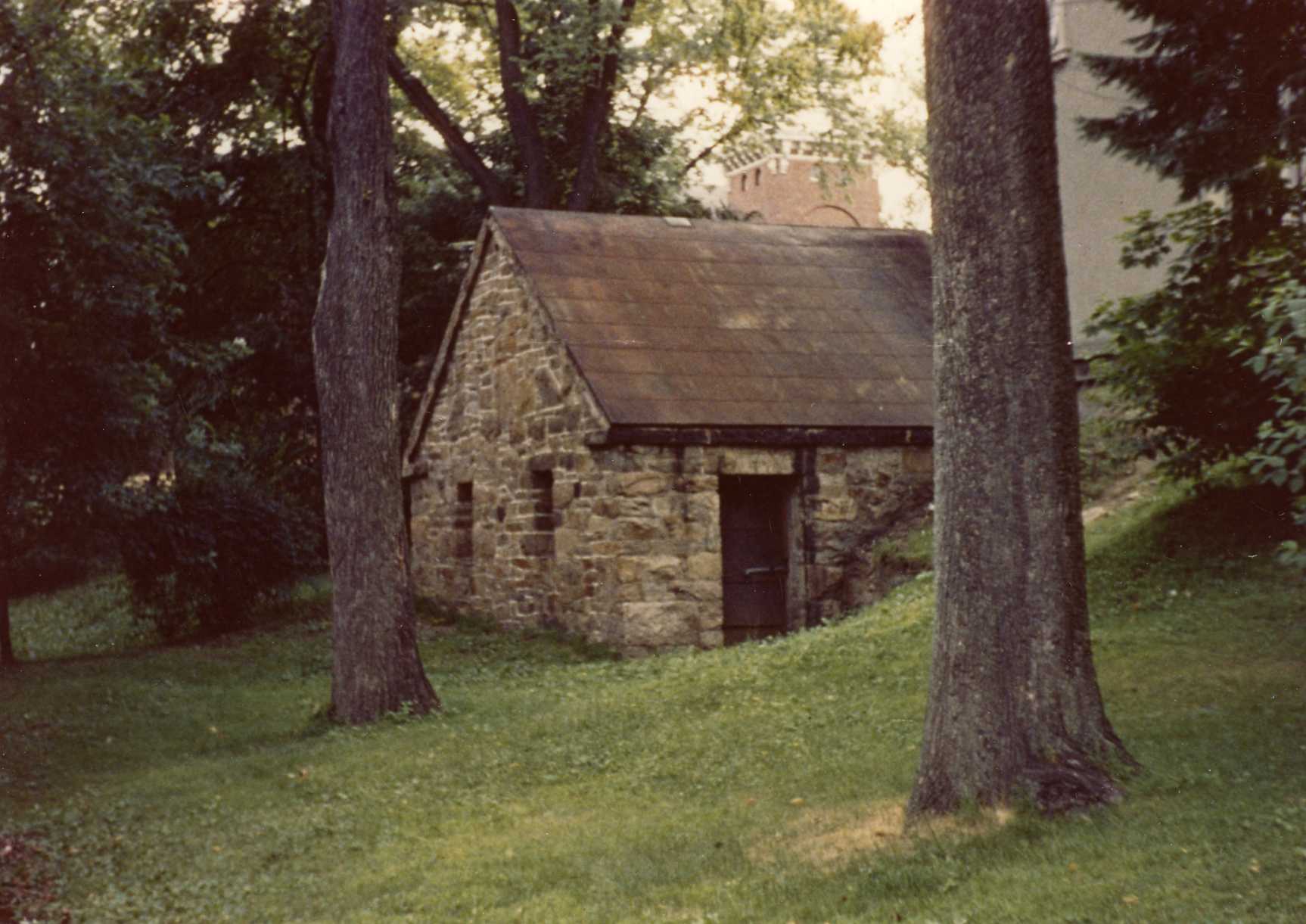
Photo credit: Branford Historical Society, Arthur Seaburg, photographer
Before the 20th century, childbirth was a home event and it was not until after the depression that babies were routinely born in the hospital. After World War I, sanitariums provided a place for childbirth and convalescence. The Forbes Sanitarium was such a place and was located on Branford Hills and run by the Forbes Family. Harriet Gray Forbes was a private nurse and established the sanitarium in her home. It was closed in 1931, sold as a private home and ultimately torn down when Route 1 was developed.
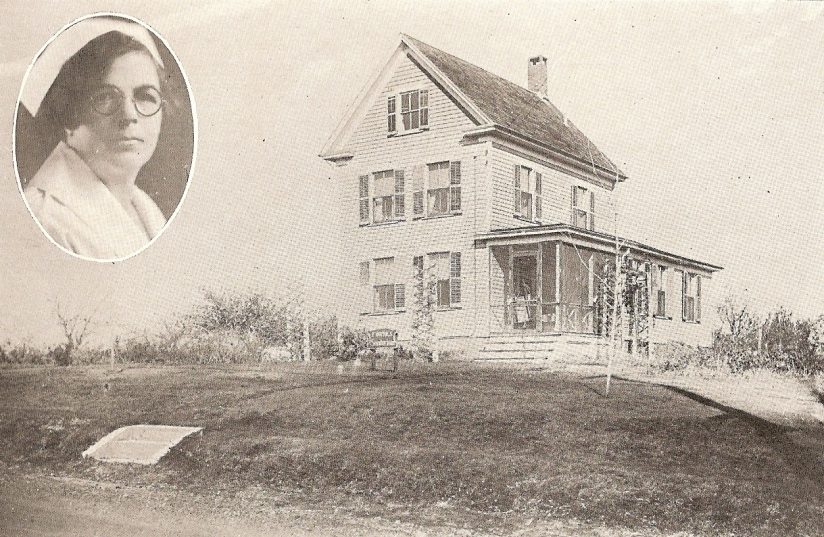
Photo credit: Branford Historical Society
The trolley line connecting Branford to New Haven, Hartford and north to Massachusetts started service in 1900. A number of stores opened along the trolley line, including the Short Beach Waiting Station. These “waiting stations” sold ice cream, candy, newspapers, groceries and beach accessories. Local boys offered to carry passengers’ luggage to the nearest summer hotel for a dime. William Knowles established the first waiting station at Shore Drive and Taylor Place. It later moved to 130 Shore Drive, the present location of the restaurant Rosso Vino.

Photo credit: Branford Historical Society
In 1998, archaeologists from Wesleyan University unearthed the remains of a 17th century Dutch fort in Indian Neck. Big enough to hold 15 to 20 men, the researchers believe that it dates to before 1620. They found musketballs, a pike, glass and copper beads, wrought iron nails, and other artifacts.
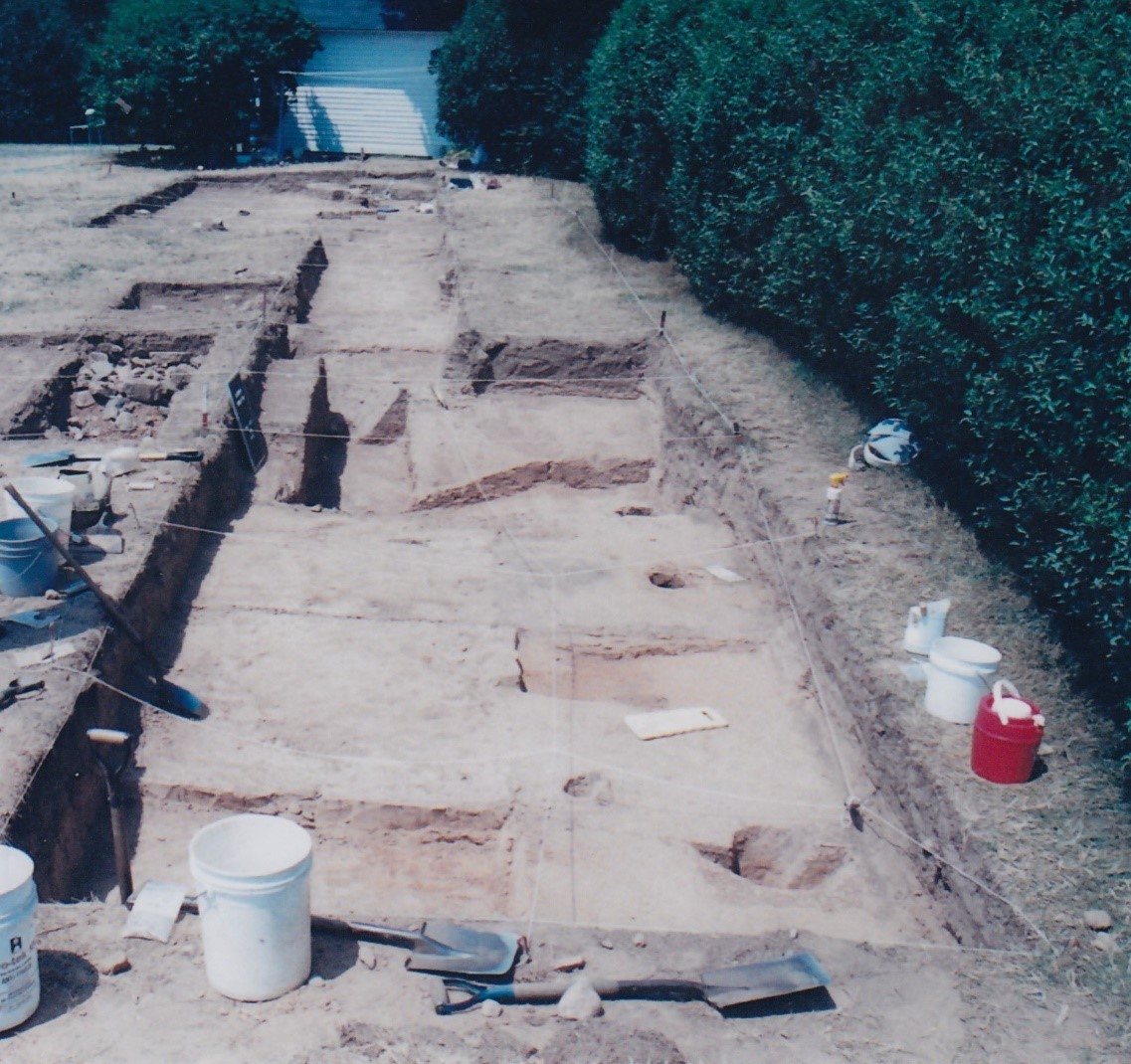
Branford has had a number of major storms, but none compare to the Blizzard of 1888. More than 40 inches of snow fell in Branford, with drifts as high as 12 feet. Workers were stranded in factories and farmers couldn’t get to their barns. Long Island Sound froze during the winter of 1917 and the town experienced major blizzards in 1934 and again in 1978. Pictured below is the aftermath of the 1934 storm.
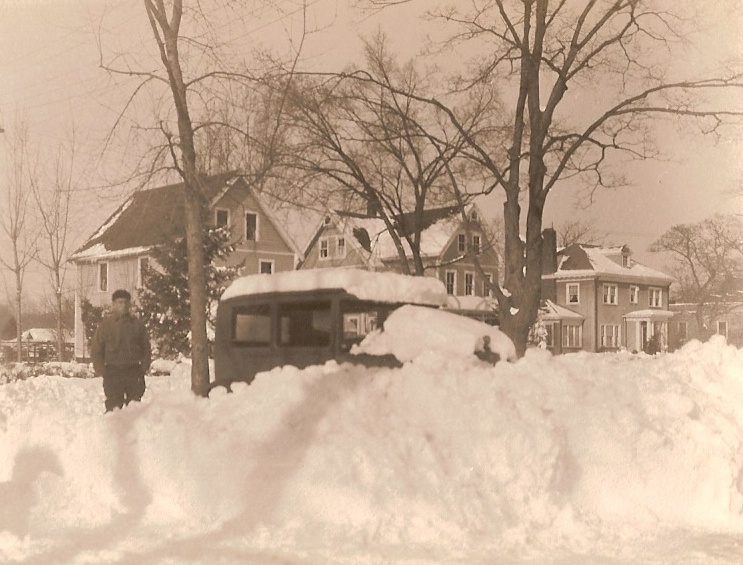
Photo credit: Branford Historical Society, V. T. Hammer, photographer
The Stony Creek Theatre was built in 1914 by William Howd of Stony Creek with lumber purchased from Frederick Jourdan & Son of Branford. The building was 28 feet by 60 feet and served in those early years as a silent movie theatre. Before the days of the “talkie” it was equipped with a player piano and admission was free for the local child willing to pump the piano. In 1925 the theatre was known as Idle Hour Moving Pictures.
The theatre became nationally known before World War II as a summer stock theatre. It was started in 1928 by a local acting group, The Parish Players, who were directed by Broadway actor Reynolds Evans, a summer resident of Pleasant Point. The theatre attracted many well-known actors and directors, among them Orson Welles and Sinclair Lewis. The Broadway show “Death Takes a Holiday” debuted at the Stony Creek Theatre in 1929 with director Lemist Esler. The sets were designed by Andre Smith, Douglas Orr and Frances Joannes, all of Branford. The beginning of the war forced the theatre to close.
Subsequently the building was used for a number of years as a factory for women’s undergarments. The factory was founded in 1943 by Joseph J. Kispert of Hamden, a designer and manufacturer of corsets. He was also vice president of the Dora Miles Company at 45 Harrison Avenue in Branford which manufactured corsets in the building formerly known as the Tryst or Music Hall. The Dora Miles factory in Branford closed in 1967.
The Stony Creek corset factory was sold to Charles J. Collini who called it the Materna Line. He ran the factory at Stony Creek from 1946 until it closed in 1960. The Stony Creek Puppet Theatre opened in June 1963 featuring the Macri-Weil life size puppets.
Update: Legacy Theatre is currently renovating the building.
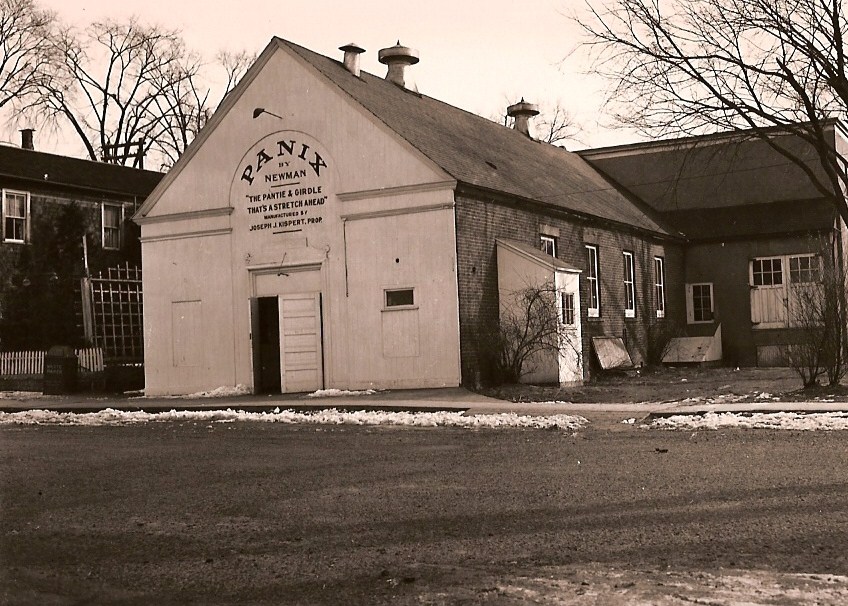
Photo credit: Branford Historical Society, Putney, photographer
Branford’s first high school was originally an ungraded school on Main Street at the corner of present day Harrison Avenue and was called “Center School” (pictured below). It was built during the Civil War for $800 and was a small two story structure. In 1879 it became the high school and was enlarged to 35 X 75 feet by contractor Richard Bradley. East and west wings were added to the building in 1881. This structure was used as the high school for 16 years and later served as an elementary school. The steeple blew off during the ’38 hurricane forcing the school to close. The building was torn down in 1940 and was replaced by the brick Frontier building which still stands today.
The need for a larger high school was realized in the late 19th century due to the growing immigrant population seeking employment at the Malleable Iron Fittings Company or the Branford Lock Works. In 1894 a building lot on Laurel Street was purchased from John Eades for $1,400. The school was designed by architect John H. Edelmann and built by Joseph N. Graveline for $22,000. The school was originally 4 rooms and two temporary rooms were added to the rear of the structure in 1948.
Yet another high school (now Sliney School) was built on Eades Street in 1928 and the current Branford High School on East Main Street was built in 1958. What was the high school on Laurel Street became known as the “Laurel Street School” and provided elementary education to the children of Branford Center until 1976 and then was used for the Branford Counseling Center and the Board of Education offices. Laurel Street School was torn down in 1994; the site is now the Branford Police Department.

Photo credit: Branford Historical Society
An effort to organize a recreation department in Branford was begun in the 1920s under the auspices of the Branford Community Council with Frank Kinney, Sr. as board chairman. Basketball games and other events were held in a red colonial house on Main Street near Harrison Avenue. This building formerly belonged to the Henry Harrison family and later became the popular Polly’s Tea Room. It was torn down in the 1950s.
More familiar is the old Community House at the corner of South Main and Montowese Streets formerly known as Wilford’s Corner. This structure was built in 1896 by Benjamin A. Hosley as the Knights of Pythias Hall. Pythian Hall was used for an armory, sporting events, school space, by the Masons, Chamber of Commerce and in 1919 was a corset factory. In 1926 Pythian Hall was purchased by the Malleable Iron Fittings Company and the next year turned over to the Branford Community Council.
The Henry Harrison House (pictured below), under the directorship of Harry Brazeau, provided a place for town events and recreation for many years. After World War II the condition of the building deteriorated and was nicknamed the “Dust Bowl”. Joseph Trapasso became recreation director in 1951 and with much community support a new Community House was built on Church Street in 1962. The former Pythian Hall was torn down in 1963 and the site is used today as a parking lot.
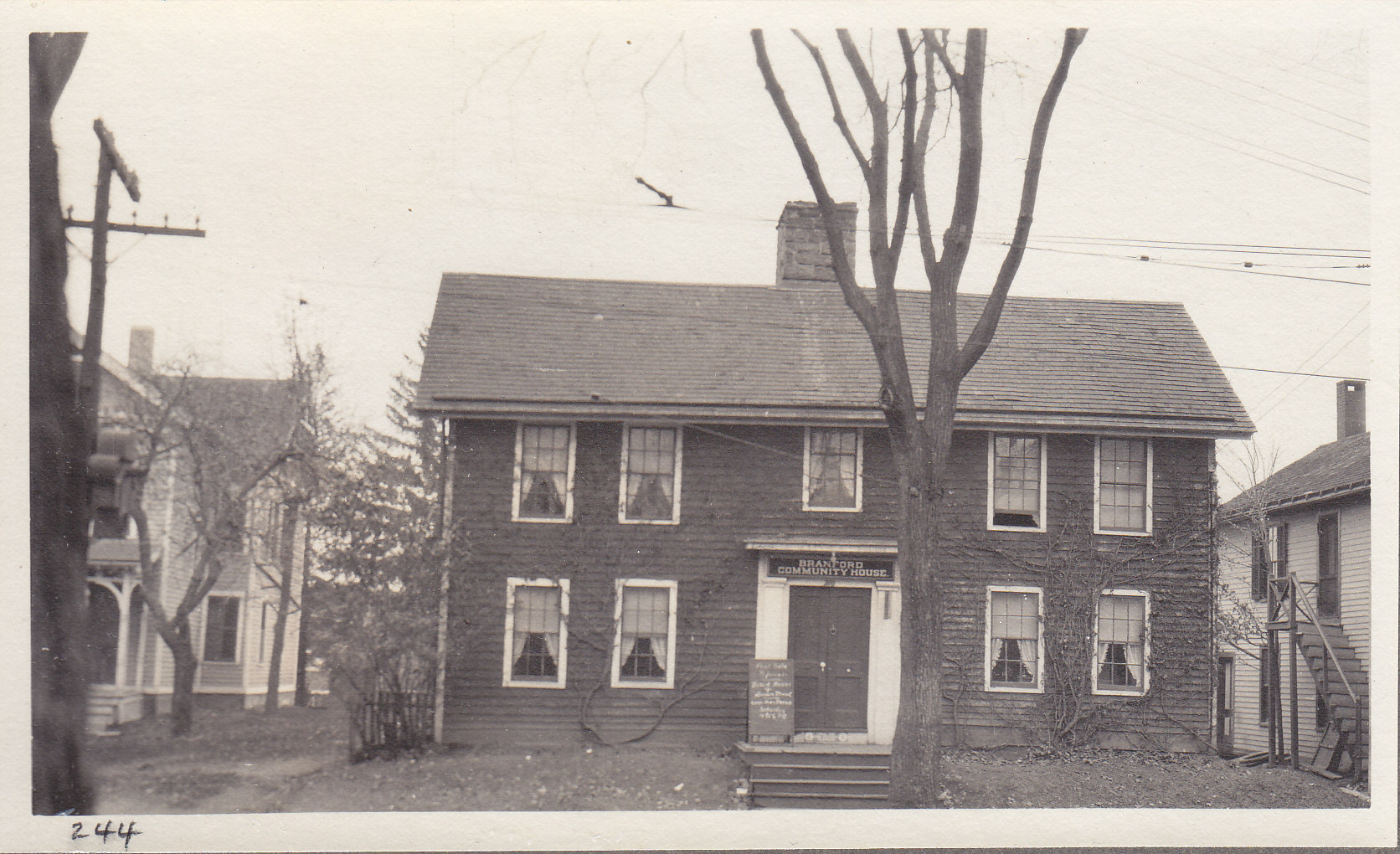
Photo credit: Branford Historical Society, H. Rossiter Snyder, photographer
The first known Branford post office was at the Lock Shop at the eastern end of Main Street in the early 1800s and successive offices were generally in the homes of the respective postmasters. Branford’s first permanent Post Office was built in 1912 at the corner of Main Street and Hillside Avenue under the guidance of Branford postmaster H. Guy Linsley. The new brick building became known as the Post Office Block and upstairs was home to a men’s club, The Wallacabuckers.
The Hillside Avenue Post Office served the community until 1927 when a new post office was built at the corner of Main and Montowese Streets. At that time the old post office housed the newly formed People’s Bank. Other occupants of the building have been the Colonial Bakery, First National Store, S.R. Hurwitz Dry Goods and for many years a barber shop was upstairs.
Ude & Murray Tire Shop was opened in 1944 at the Hillside Avenue site by owners William Ude and John J. Murray. They remained at this location until 1967 when they moved to the Rosenthal Block. Alfredo’s Restaurant was the tenant when the building burned in 1975. The building was saved and remodeled and the well-known Vietnamese restaurant Chez Bach was opened by Bach Ngo in 1982 and is now Darbar India Restaurant.
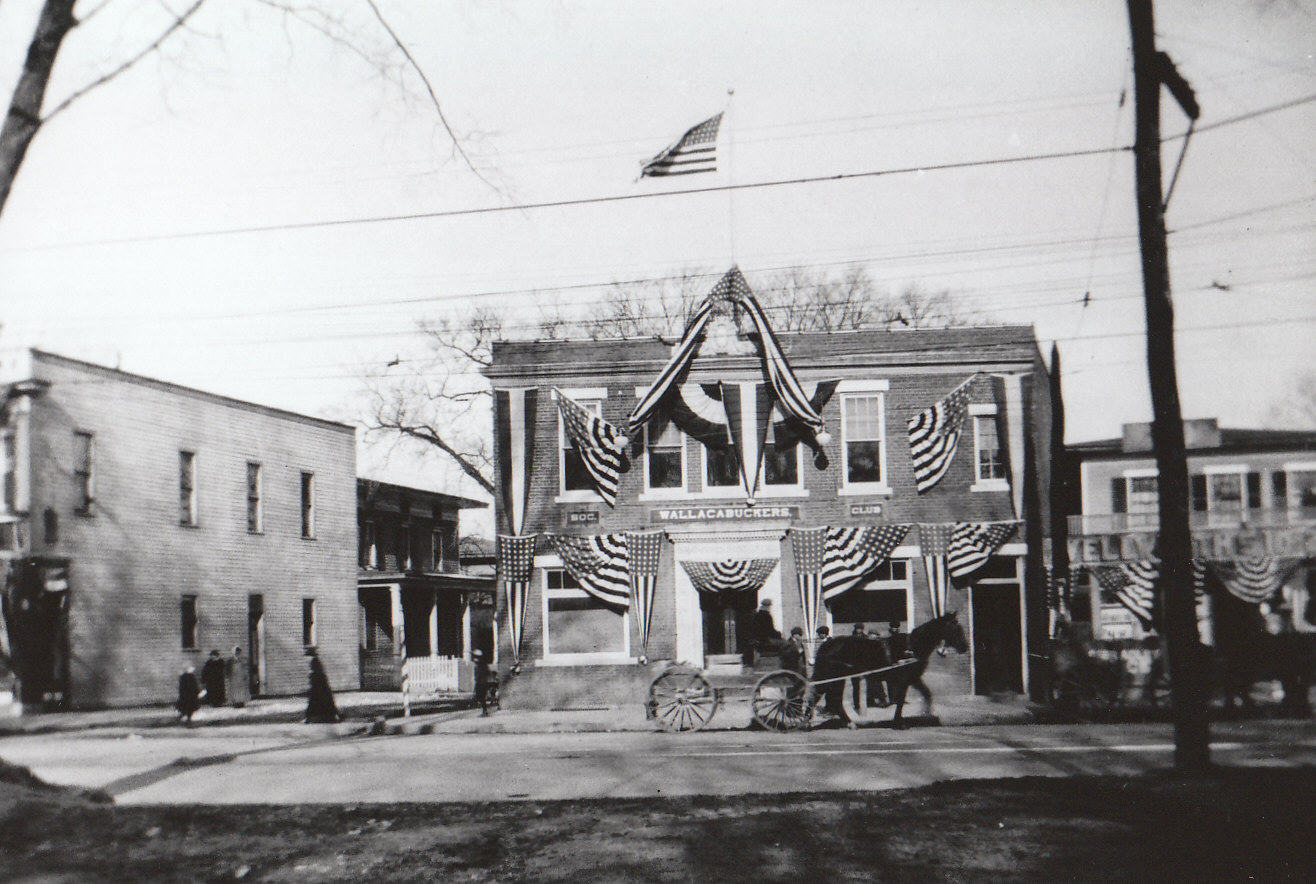
Photo credit: Branford Historical Society, Charles N. Baxter, photographer
A post road was established in 1673 to connect New York City and Boston. This road became known as the King’s Highway, the Great Road or the Boston Post Road named for the post riders who used it. There were actually three Boston Post Roads connecting Boston and New Haven. The original road went from New Haven through Hartford, Springfield and Worcester and became known as the Upper Road or Old Boston Post Road. The Middle Post Road went from New Haven to Wethersfield then cut through Massachusetts. The Lower Boston Post Road followed the Connecticut shoreline to Rhode Island. All three routes merged at New Haven and the post road became one road from there to New York City. Today Route 1 is a different route than the Boston Post Road though in some places follows the old road.
From New Haven the King’s Highway followed a path over the Great Hill (Branford Hills) and included Main Street in Branford. It continued east to Guilford where the road today is still known as the Boston Post Road. East Main Street in Branford east of the river was for many years called the Guilford Turnpike though it was part of the Boston Post Road. Route 1 along North Main Street, which bypassed Branford Center, was not built until 1932.
Taverns were established along the post roads to accommodate travelers. The Jonathan Towner Halfway House (pictured below) was built about 1743 and was so named because it was half way between Branford and Guilford. For many years it provided lodging to travelers using the Boston Post Road and was long owned by the Towner family. The building stood across from St. Agnes Cemetery and was torn down in the 1970s.
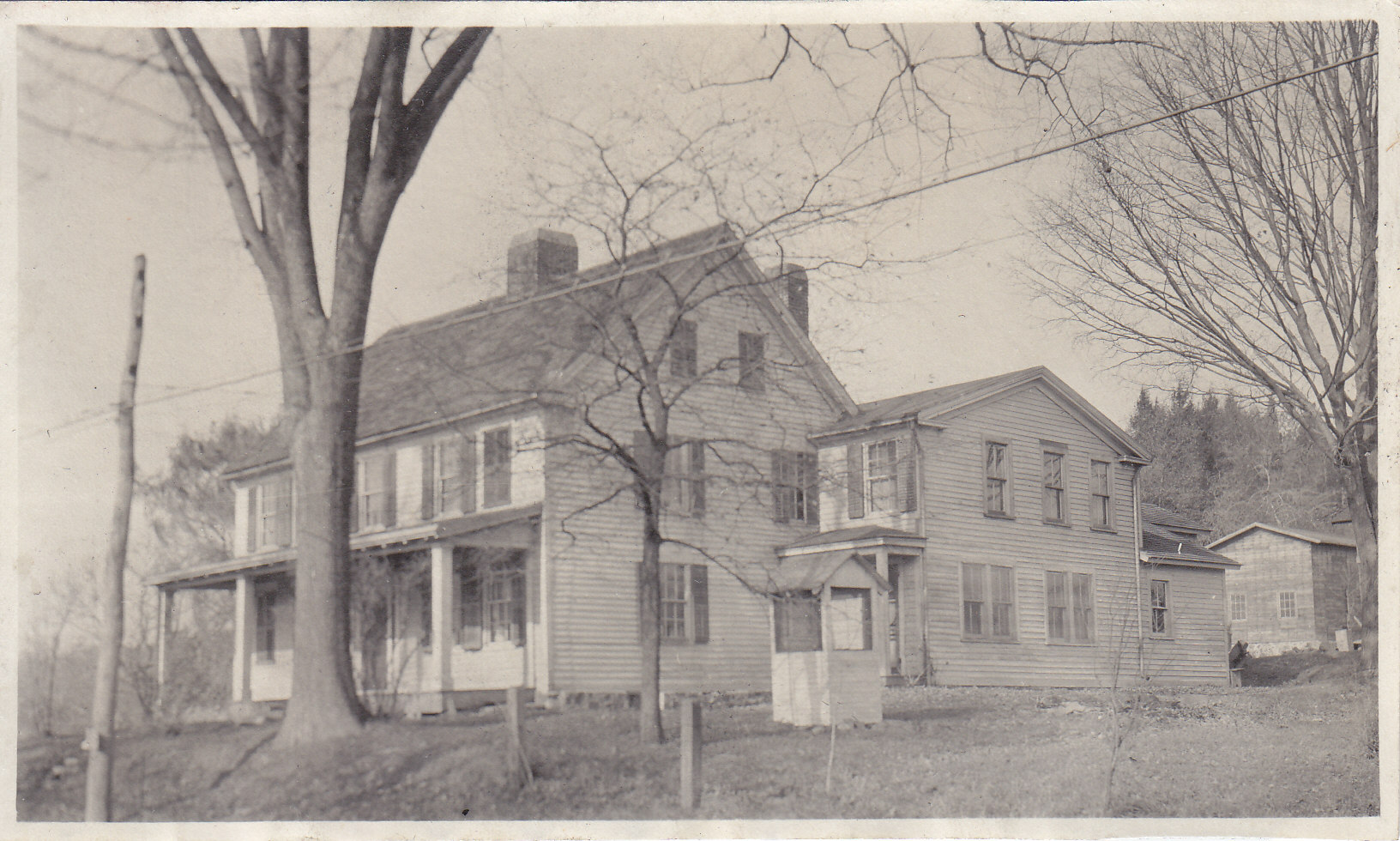
Photo credit: Branford Historical Society
Following the Civil War the formation of what would become the United States National Guard was initiated. In 1868 some local men organized Branford Battery A which was part of the First Light Artillery of the Connecticut Volunteer Infantry.
Battery A held weekend drills, weeklong camps and marched in all the local parades. They went by boat to Boston where troops from all of New England held war maneuvers. The Battery used a barn at the rear of a house on Montowese Street to store their cannons and practice marching and drills. Horses were rented for weekend maneuvers from First Selectman M. P. Rice who also owned a livery business. This location was abandoned in 1898. It was turned around, moved back 15 feet and made into a two family dwelling by contractor Richard Bradley in 1903. This building still stands at 6 Bradley Avenue.
Pythian Hall on South Main Street, later known as the Community House, was built by Benjamin Hosley in 1896 and used by Battery A as their new Armory. For many years Battery A held drills at Pawson Park and could be seen in the fields with their horses and cannons. A new Armory on Montowese Street was built in 1913 and Battery A had 133 men and 100 horses. At that time it was the only artillery company in the Connecticut National Guard.
Branford Battery A was called to duty during the Spanish American War in 1898 and later as part of the Federal National Guard system serving their country during the two World Wars and Korea.
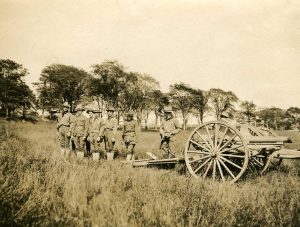
Photo credit: Branford Historical Society
Branford industries contributed many innovations to their fields. The Branford Lock Works, started by Thomas Kennedy in 1862, held many patents for lock and window hardware. Many BLW products are still being used in homes today and are prized among lock collectors. Thorvald Hammer (1825-1901) of the Malleable Iron Fittings Company invented the tapping or threading machine which was used for pipe fittings. MIF built tapping machines and leased them to other companies. His son Alfred Hammer (1858-1935) established the first chemical control and research lab in the country at MIF in 1875. He vastly improved the use of iron during processing and shared his findings with others in the industry.
Thomas Doolittle (1839-1921) owned Thimble Farms in Pine Orchard and was a pioneer in the telephone industry. He was the first vice president of AT&T and designed the first telephone switchboard ever manufactured. He also adapted the use of hard drawn cooper wire for underground cable. The first transcontinental telephone call to Connecticut was made in 1915 from San Francisco to his home in Pine Orchard.
Several local men were active in the early years of motor boat engines. Edwin Baldwin (1886-1964) had a shop on the Indian Neck Avenue bridge and built boat engines. Claus Johnson (1861-1955) of Short Beach was an early builder and racer of motor boats winning many prizes. Earl Bradley (1886-1964) had a garage on Bradley Street where he repaired automobiles and probably built Branford’s first tow truck. He was an avid boatman and with Claus Johnson built a 35 mph engine out of a Curtis airplane motor. Much to the delight of the local children he created various motorized winter apparatus such as a motorcycle with skis.
Branford’s foremost inventor was John Donnelly (1853-1937). He was a blacksmith and held many patents at the turn the century such as a lineman climber for utility poles, Christmas tree holder, can opener, hack saw, screw driver, cotton hook and hedge clippers.
Photograph shows Earl Bradley in his “Motor Bob” which was a motorcycle with skis he built in 1917.

Photo credit: Branford Historical Society
Branford has long been a community of immigrants. The Irish arrived in Branford about 1850 and worked at the Lockworks. Natives of Finland and Sweden began to arrive in the 1880’s and worked at Malleable Iron Fittings and in the quarries. Italians arrived in the early 1900’s and worked at MIF, in building trades and restaurants, in the quarries, as farmers and in the grocery stores. In that same time frame, natives of Poland, Lithania and Croatia settled in Branford. Pictured below is a group of quarry workers and their families.

Photo credit: Branford Historical Society
William Fowler Hopson (1849-1935) was an artist and engraver. Born in Watertown, Connecticut he first worked as an engraver in New York City and ultimately settled in New Haven, where he illustrated books. He created over 200 intricate bookplates over the course of his career, including one for the Blackstone Library. Hopson also designed the invitation to the opening exercises of the library in 1896.

Branford’s neighborhoods have had a number of name changes over the years. Looking at the 1868 Beers map, some of these district names include Northwest, Scotch Cap, and Paved Street as well as the more well-known ones of Mill Plain, Damascus and Stony Creek. The northern part of Granite Bay was once called Klondike, Mulliners Neck was in the Branford Point area, the section around Route 139 was called Hopyard or Hopping Plain, and Double Beach was once known as Town Neck.
